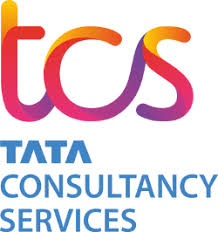Scalable, compliant superapp
%201%20(1).png)
Wrtn Technologies leveraged Microsoft's Azure OpenAI Service with its newest o1 models to power a localized AI superapp, integrating features such as intelligent search, conversational chat, and code generation into its platform. They implemented the solution by incorporating Azure AI Foundry and Azure AI Content Safety to ensure secure data residency and regulatory compliance, streamlining both consumer interactions and internal development workflows.
.png)
Exponential increase in query accuracy and daily coding feature usage
17
AI use cases in
Telecommunications

%201%20(1).png)
SK Telecom integrated Anthropic's Claude on the Amazon Bedrock platform to power both in-call assist and post-call processing solutions. They implemented a custom in-house RAG model combined with real-time document search and automated summarization, classification, and sentiment analysis to augment call center operations and support culturally nuanced customer interactions.
%20(1).png)

%201%20(1).png)
Vodafone uses Azure OpenAI Service, Azure AI Foundry, Microsoft Copilot, and Azure AI Search to enhance their virtual assistant TOBi and develop SuperAgent to assist customer service agents. TOBi uses conversational AI to handle customer inquiries, while SuperAgent helps agents solve complex problems faster.
%20(1).png)

%201%20(1).png)
Bell Canada has built customizable contact center solutions for its business customers that offer AI-powered agents to address callers, and Agent Assist, which listens when a human agent is on, offering suggestions and sentiment analysis.
%20(1).png)
151
companies using
Data Agents

%201%20(1).png)
wealthAPI implemented a next‐gen contract detection solution by integrating DataStax Astra DB on Google Cloud and leveraging Google Gemini models for AI‐powered analysis. They deployed DataStax’s vector search and real‐time insights capabilities to scale contract detection across millions of users in less than three months, streamlining wealth management workflows by dramatically reducing response times and efficiently handling massive data volumes.
%20(1).png)

%201%20(1).png)
Aura Intelligence integrated Anthropic's Claude via Amazon Bedrock into its data pipeline to automatically classify over 200 million job titles and industry pairings from multi-language data, replacing manual lookups and fuzzy matching. They fine-tuned foundation models on proprietary datasets and leveraged AWS infrastructure, including SageMaker and prompt management, to automate QA, report generation, anomaly detection, and real-time hiring trend analysis.
%20(1).png)

%201%20(1).png)
LaunchNotes leverages Claude in Amazon Bedrock in their product 'Graph' to transform engineering data into actionable insights. Graph functions as an ETL platform with Claude managing data pipelines, helping engineering managers understand development metrics, reduce incident identification time, automate updates, and generate customized release notes and technical documentation.
%20(1).png)
251
solutions powered by
Microsoft

%201%20(1).png)
Physics Wallah developed 'Gyan Guru', a hyperpersonalized conversational study companion to address the unique academic and support needs of its 2 million daily users.
The system was implemented by indexing over one million Q&As and ten million solved doubts in a vector database, then leveraging a Retrieval-Augmented Generation (RAG) approach integrated with Azure OpenAI to deliver individualized, context-aware responses.
The integration streamlined things like
- various student interactions including academic queries
- product-related issues
- general support
The main benefit achieved was reducing reliance on human subject matter experts.
%20(1).png)

%201%20(1).png)
Brandix adopted the Microsoft 365 Copilot suite via the Early Access Program to integrate AI into key executive workflows, automating meeting transcript-based action tracking in Teams, accelerating pitch deck creation in PowerPoint, and streamlining document generation in Word while leveraging AI-enhanced querying in Power BI and efficient information retrieval via Copilot Chat. This implementation transformed internal communications, reporting, and presentation preparation processes by significantly reducing manual effort.
%20(1).png)

%201%20(1).png)
University of Oxford’s IT Services department deployed Microsoft 365 Copilot across its 400+ staff as part of a pilot program aimed at embedding generative AI into research, teaching, and administrative workflows.
They implemented extensive onboarding sessions, community engagement via Microsoft Teams, and established an acceleration team to integrate Copilot with other business applications. This deployment streamlined routine tasks such as document generation, summarization, and meeting support, fostering innovation within the department.
%20(1).png)
78
AI use cases in
Asia

%201%20(1).png)
TCS partnered with Google Cloud to integrate advanced AI and generative AI capabilities into retail service offerings. They launched the Google Cloud Gemini Experience Center at their Retail Innovation Lab in Chennai, enabling retail clients to ideate, prototype, and co-develop tailored AI solutions that optimize supply chain, warehouse receiving, customer insights, and content creation.
This approach automated processes using tools like Vertex AI Vision for warehouse receiving and leveraged Vertex AI with Gemini 1.5 Pro and speech-to-text to transform service centers.
%20(1).png)

%201%20(1).png)
LY Corporation leveraged OpenAI’s API to integrate advanced generative AI into its flagship services, including a GPT‑4o-powered LINE AI Assistant and GPT‑4 enhancements in Yahoo! JAPAN Search for summarizing reviews and generating travel plans. They also deployed SeekAI, an in-house productivity tool using RAG to rapidly retrieve information from internal documentation, streamlining employee inquiries and operations.
%20(1).png)

%201%20(1).png)
Physics Wallah developed 'Gyan Guru', a hyperpersonalized conversational study companion to address the unique academic and support needs of its 2 million daily users.
The system was implemented by indexing over one million Q&As and ten million solved doubts in a vector database, then leveraging a Retrieval-Augmented Generation (RAG) approach integrated with Azure OpenAI to deliver individualized, context-aware responses.
The integration streamlined things like
- various student interactions including academic queries
- product-related issues
- general support
The main benefit achieved was reducing reliance on human subject matter experts.
%20(1).png)
%201%20(1).png)
%202.png)

%202.png)
%201.png)
%201.png)
%20(1)%20(1).png)
.png)


.png)
.svg)


.png)


.png)








%201.png)